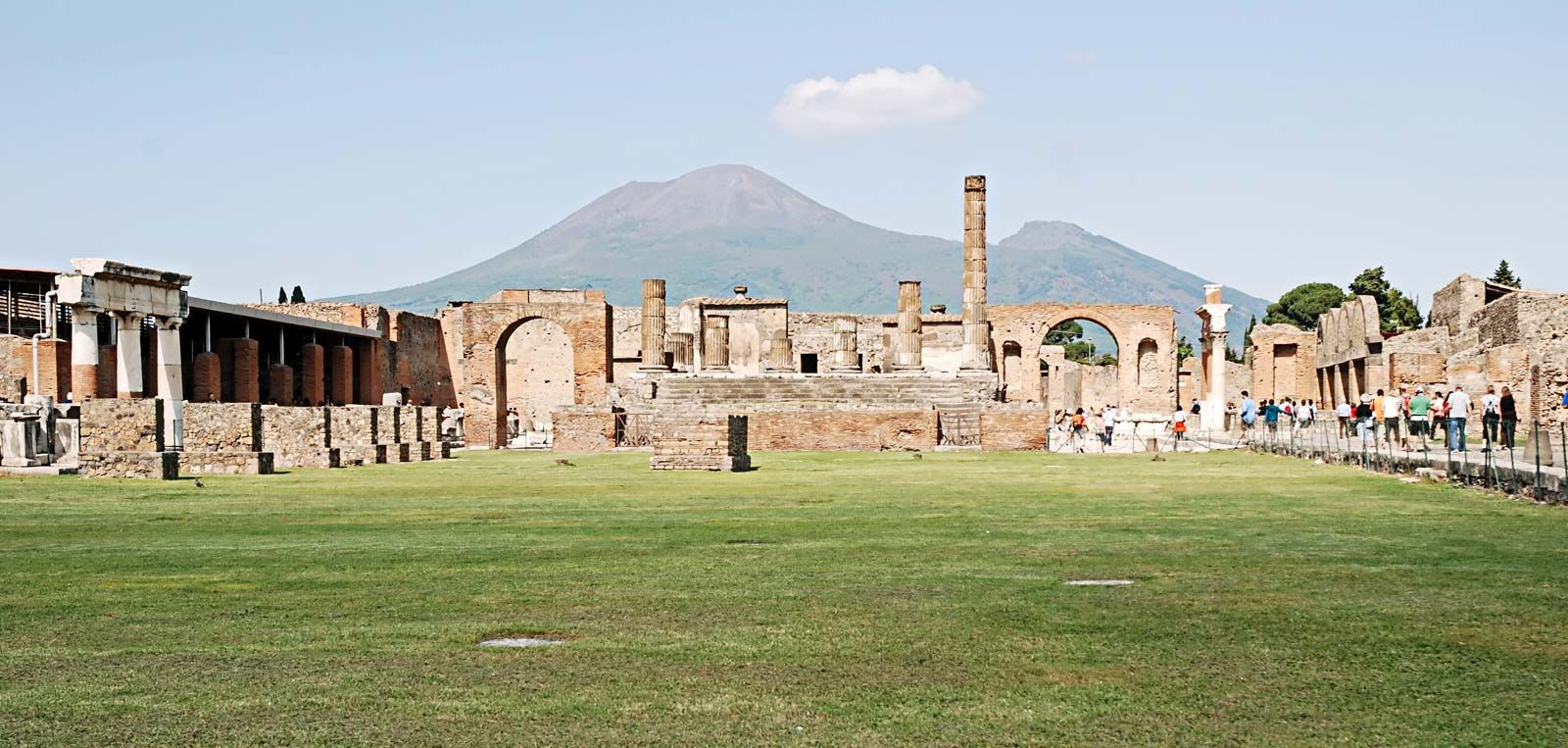Pompeii, a name synonymous with tragedy and historical preservation, evokes images of a bustling Roman city frozen in time. But Where Is Pompeii exactly? This ancient city, remarkably preserved by the catastrophic eruption of Mount Vesuvius in 79 AD, is located in modern-day Italy, in the region of Campania. More specifically, Pompeii lies about 14 miles (23 km) southeast of Naples, nestled at the southeastern base of the imposing Mount Vesuvius.
 Mount Vesuvius and Pompeii
Mount Vesuvius and Pompeii
The geographical coordinates place Pompeii near the coast, built upon a spur of land formed by prehistoric lava flows, just north of the Sarnus River’s mouth (now known as the Sarno River). This strategic location was not accidental; it played a crucial role in Pompeii’s development and eventual demise.
Pompeii’s setting in the Campania region is significant. Campania, a fertile and prosperous area in ancient Italy, was known for its rich volcanic soil, ideal for agriculture, and its strategic coastal position, facilitating trade and communication throughout the Roman world. The proximity to Mount Vesuvius, while ultimately destructive, initially contributed to this prosperity through fertile land and resources. Nearby cities like Herculaneum, Stabiae, and Torre Annunziata also thrived in this vibrant region, sharing a similar fate with Pompeii during the eruption.
The city’s layout was influenced by its terrain. Built on a plateau formed by lava, Pompeii was not laid out in a grid plan like some Roman cities, but adapted to the natural contours of the land. This gave it a unique urban character, with streets winding and rising in certain areas. The city walls, remnants of which still stand, enclosed an area of approximately 163 acres (66 hectares), showcasing a substantial urban center for its time.
Pompeii’s history predates the Roman Empire, with origins tracing back to Oscan settlements. Its location near the Sarnus River mouth positioned it at a crossroads of cultures and influences. The Greeks, who colonized the Bay of Naples in the 8th century BC, exerted cultural influence, followed by the Etruscans in the 7th century BC. By the 5th century BC, the Samnites, an Italic tribe, conquered the region, and Pompeii became a Samnite town.
The Romans entered Pompeii’s history in the 3rd century BC, and after the Social War (early 1st century BC), Pompeii became a Roman colony. Latin became the official language, and Roman institutions, architecture, and culture took root, transforming Pompeii into a Roman city. Its location made it a vital part of the Roman network, benefiting from trade and Roman infrastructure.
 Pompeii
Pompeii
The fateful eruption of Mount Vesuvius in 79 AD abruptly ended Pompeii’s vibrant existence. On August 24th, the volcano unleashed its fury, burying Pompeii under layers of ash, pumice, and volcanic debris. The eruption wasn’t just a single event; it unfolded over approximately 24 hours, starting with ashfall and culminating in pyroclastic flows – scorching avalanches of gas and volcanic matter – that devastated the city and surrounding areas.
This catastrophic event, while destructive, paradoxically became Pompeii’s preservation. The thick blanket of volcanic material sealed the city, protecting it from the ravages of time and weather, effectively creating a time capsule of Roman life. It wasn’t until the 18th century that Pompeii was rediscovered, and systematic excavations began, revealing the astonishingly preserved city.
Today, Pompeii is a UNESCO World Heritage site and a major archaeological destination. Visitors can walk through the ancient streets, explore homes, shops, public buildings like the Forum and amphitheater, and witness firsthand the remnants of daily life in a Roman city. The casts of the eruption’s victims, poignant reminders of the tragedy, are among the most moving sights at Pompeii.
 Pompeii
Pompeii
So, where is Pompeii? It’s not just a point on a map in Italy; it’s a portal to the past. Located in Campania, near Naples and Mount Vesuvius, Pompeii stands as a testament to Roman civilization and a powerful reminder of the forces of nature. Its unique preservation offers unparalleled insights into the lives of ordinary people in the ancient world, making it an essential destination for anyone seeking to understand Roman history and culture. Visiting Pompeii is not just seeing ruins; it’s stepping back in time to experience a city tragically frozen in a moment, yet vibrantly alive in its preserved details.

